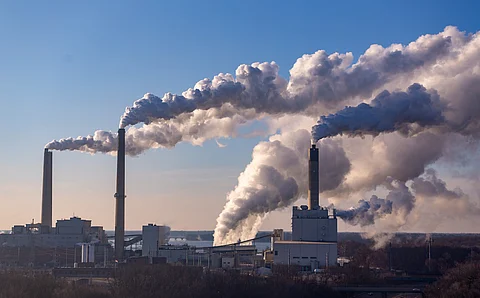

The total carbon dioxide (CO2) emissions for 2024 are projected to be a whopping 41.6 billion tonnes, up from 40.6 billion tonnes last year, according to the Global Carbon Budget (GCB) released to coincide with the 29th Conference of Parties (COP29) to the United Nations Framework Convention on Climate Change.
The figure of 41.6 billion tonnes of CO2 includes fossil CO2 emissions of 37.4 billion, and the rest from land-use change (deforestation).
Both fossil and land-use change CO2 emissions are set to rise this year, with drought conditions exacerbating emissions from deforestation and forest degradation fires during the El Niño climate event of 2023-2024, as per the GCB.
“With over 40 billion tonnes released each year at present, the level of CO2 in the atmosphere continues to rise — driving increasingly dangerous global warming,” said the World Meteorological Organization or WMO’s Greenhouse Gas Bulletin.
Greenhouse gas concentrations in 2023 — the last year for which data is available – also hit record levels, according to the Bulletin.
According to WMO’s State of the Climate Update, 2024 is set to be the hottest year on record, temporarily hitting the 1.5°C above the pre-industrial era.
Both, State of the Climate Update and Greenhouse Gas Bulletin by WMO were presented at Earth Information Day to inform the UNFCCC Subsidiary Body for Scientific and Technological Advice (SBSTA).
In the Chair’s concluding document, SBSTA “expressed utmost concern about the state of the global climate system, with record high atmospheric greenhouse gas concentrations being observed in 2023, with 2024 being on track to be the hottest year on record, which is primarily a result of the long-term warming caused by emissions from pre-industrial times until now.”
The long lifetime of CO2 in the atmosphere locks in temperature increase for generations to come. Until net zero is reached, world temperatures will continue to rise and cause increasingly severe impacts — as witnessed in 2024 and recent years.